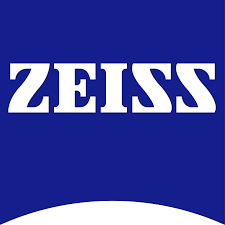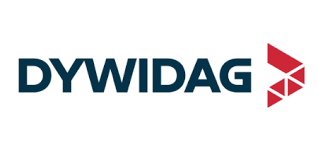Aerodynamic Market Report
Published Date: 15 December 2025 | Report Code: aerodynamic
Aerodynamic Market Size, Share, Industry Trends and Forecast to 2033
This report provides a comprehensive analysis of the Aerodynamic market, including market size, growth trends, segmentation, and key players. Insights are drawn from qualitative and quantitative data covering the forecast period from 2023 to 2033.
| Metric | Value |
|---|---|
| Study Period | 2023 - 2033 |
| 2023 Market Size | $15.00 Billion |
| CAGR (2023-2033) | 6.2% |
| 2033 Market Size | $27.79 Billion |
| Top Companies | Boeing , Airbus, Ford Motors, General Motors, Dassault Systèmes |
| Last Modified Date | 15 December 2025 |
Aerodynamic Market Overview
Customize Aerodynamic Market Report market research report
- ✔ Get in-depth analysis of Aerodynamic market size, growth, and forecasts.
- ✔ Understand Aerodynamic's regional dynamics and industry-specific trends.
- ✔ Identify potential applications, end-user demand, and growth segments in Aerodynamic
What is the Market Size & CAGR of Aerodynamic market in Year?
Aerodynamic Industry Analysis
Aerodynamic Market Segmentation and Scope
Tell us your focus area and get a customized research report.
Aerodynamic Market Analysis Report by Region
Europe Aerodynamic Market Report:
The European market, valued at USD 4.96 billion in 2023, is predicted to reach USD 9.20 billion by 2033. The focus on green technologies and high-performance aerodynamic designs in both automotive and aerospace industries significantly contributes to this robust growth.Asia Pacific Aerodynamic Market Report:
In the Asia-Pacific region, the Aerodynamic market is expected to rise from USD 2.63 billion in 2023 to USD 4.88 billion by 2033. This growth is fueled by rapid industrialization and significant investments in aerospace and automotive manufacturing, especially in countries like China and India.North America Aerodynamic Market Report:
North America remains a leader in the Aerodynamic market, with size projections increasing from USD 5.22 billion in 2023 to USD 9.67 billion by 2033. The presence of major aerospace corporations and stringent emission regulations are substantial growth drivers in this region.South America Aerodynamic Market Report:
The South American market is anticipated to grow modestly from USD 0.33 billion in 2023 to USD 0.61 billion by 2033. The demand for aerodynamic solutions in automotive applications is driving this growth, albeit at a slower pace compared to other regions.Middle East & Africa Aerodynamic Market Report:
The Middle East and Africa are expected to witness growth from USD 1.85 billion in 2023 to USD 3.44 billion by 2033. Emerging markets in these regions are investing in innovative aerodynamic solutions, particularly in the aerospace sector, bolstered by oil revenues.Tell us your focus area and get a customized research report.
Aerodynamic Market Analysis By Product
Global Aerodynamic Market, By Product Market Analysis (2023 - 2033)
In 2023, the Aerodynamic Components segment is estimated at USD 13.20 billion, growing to USD 24.47 billion by 2033, capturing 88.03% of the market share. The Systems segment, while smaller, is anticipated to increase from USD 1.80 billion to USD 3.33 billion, maintaining an 11.97% share.
Aerodynamic Market Analysis By Application
Global Aerodynamic Market, By Application Market Analysis (2023 - 2033)
Aerospace leads the market with a size of USD 10.19 billion in 2023 and is projected to reach USD 18.88 billion by 2033, claiming a 67.93% market share. The Automotive segment follows, expected to grow from USD 3.64 billion to USD 6.75 billion, with a 24.27% share.
Aerodynamic Market Analysis By Technology
Global Aerodynamic Market, By Technology Market Analysis (2023 - 2033)
CFD is a significant contributor, with market size projections remaining stable at USD 10.19 billion in 2023 and expected to reach USD 18.88 billion by 2033. Wind Tunnel Testing and Virtual Reality Simulation are also critical technologies in the analytical space, projected to maintain similar growth trajectories.
Aerodynamic Market Analysis By End User
Global Aerodynamic Market, By End-User Industry Market Analysis (2023 - 2033)
Transportation applications account for a substantial USD 10.19 billion in 2023, projected to grow to USD 18.88 billion by 2033. Industries such as Sports and Building Design are also noteworthy, with smaller market sizes but significant growth potential, especially in enhancing design protocols.
Aerodynamic Market Trends and Future Forecast
Tell us your focus area and get a customized research report.
Global Market Leaders and Top Companies in Aerodynamic Industry
Boeing :
A prominent aerospace manufacturer, Boeing is involved in advanced aerodynamics research to improve fuel efficiency and performance of commercial and military aircraft.Airbus:
Airbus specializes in developing fuel-efficient aircraft designs, utilizing sophisticated aerodynamic modeling techniques across its range of products.Ford Motors:
Ford actively integrates aerodynamic principles into its automotive designs to enhance performance and reduce carbon footprint, leading innovations in the automotive sector.General Motors:
A key player in the automotive sector, General Motors focuses on aerodynamic optimization for enhancing the efficiency of its vehicle lineup.Dassault Systèmes:
A worldwide leader in 3D design software, Dassault Systèmes provides advanced CFD tools that are essential for aerodynamic testing in various industries.We're grateful to work with incredible clients.









FAQs
What is the market size of aerodynamic?
The global aerodynamic market is valued at approximately $15 billion in 2023, with a projected CAGR of 6.2% through 2033, signifying robust growth and increasing demand across various industries.
What are the key market players or companies in this aerodynamic industry?
Leading companies in the aerodynamic sector include major aerospace firms, automotive manufacturers, and specialized engineering firms focused on aerodynamic technologies, contributing to innovative solutions and advancements in the market.
What are the primary factors driving the growth in the aerodynamic industry?
Key growth drivers include advancements in technology, increasing demand for fuel-efficient vehicles, regulatory pressures for emissions reduction, and heightened focus on performance optimization in aerospace and automotive sectors.
Which region is the fastest Growing in the aerodynamic market?
The fastest-growing region in the aerodynamic market is Europe, which is projected to grow from $4.96 billion in 2023 to $9.20 billion by 2033, reflecting a strong focus on sustainable transportation solutions.
Does ConsaInsights provide customized market report data for the aerodynamic industry?
Yes, ConsaInsights offers customized market report data, tailored to specific client needs in the aerodynamic industry, facilitating deeper insights and strategic decision-making.
What deliverables can I expect from this aerodynamic market research project?
Deliverables from the aerodynamic market research project typically include detailed reports, segmentation analysis, growth forecasts, and comprehensive data for informed strategic planning.
What are the market trends of aerodynamic?
Emerging trends in the aerodynamic market include increasing investment in research and development, the integration of artificial intelligence in design processes, and a growing emphasis on renewable energy usage.

